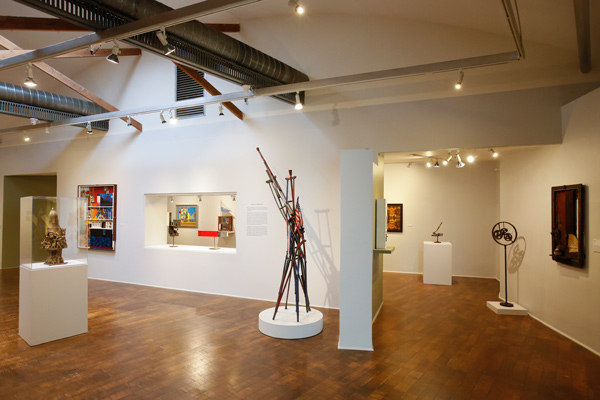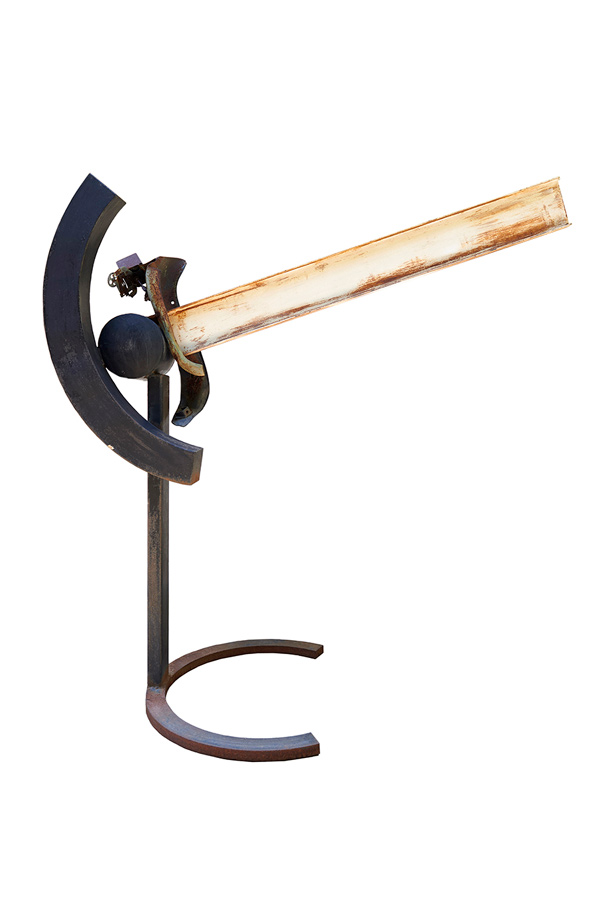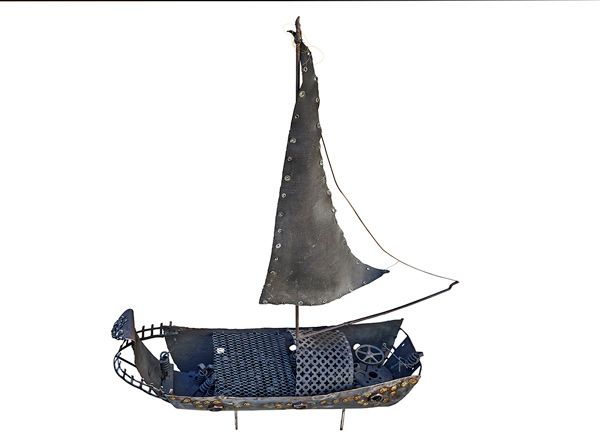Walking into the 3rd floor gallery of Craft Contemporary, which is filled with disparate objects and images, what a viewer is likely to notice first is what a broad spectrum of art is on exhibit there. John T. Riddle, the artist who is the focus of this show, was a protean force and had a way of adopting various genres, techniques and approaches without settling into any one style as a signature. The works of art are deeply engaging, from sculptures that reference slave ships and the African diaspora and assemblages into which found objects culled from the streets after the 1965 Watts uprising are embedded, to others that celebrate the community of artists who surrounded and found inspiration in Riddle’s life and work. The exhibition title, “The RIDDLE Effect” reflects how Riddle worked and the ripples of influence he created that extended into the world reaching and touching other artists.

“The RIDDLE Effect” installation view at Craft Contemporary, 2019. Photo: Ryan Miller.
Riddle’s inventive use of assemblage, welded metals, ceramics and paint was never merely formalist. Rather, his mastery of material gave shape to his explorations of blackness, masculinity, community and love. His works ranged in size and scope but they never relinquished either aesthetic value or political poignancy.

John Riddle, Panthers (ca. 1970), welded metals, 20 x 14 x 17 inches. Collection of Dale Davis.
In Panthers, ca. 1970, a rectangular sculpture that looks very much like a game board mounted atop a stanchion, a number of cylinders topped by spheres are arranged as if drawn up for battle. Thus arrayed, they are depicted such that a scythe has already chopped down one side and is beginning to cut into the other. Aside from the obvious political ramifications of the title, the work presents a compelling play of found and fabricated materials as well as an astounding formal array of shapes: the sickle’s cantilevered wood handle plays off the curved and rectangular shapes beneath it. Typical of Riddle’s work, elements of playfulness and menace are juxtaposed.

John Riddle, Untitled (ca. 1970s), welded metals, 84 x 48 inches. Collection of Bill and June Pajaud. Photo: Melanie Aron.
Alongside his own are artworks by other black artists who were influenced by him as students or peers during the course of their lives. It is clear from these works that the artists knew each other’s work and were riffing off of each other. Particularly now in a moment in which art seems less embedded in the world, witnessing the synergy of this community is extremely heartening.

John Riddle, A Magnificent Stroke (1973), welded metals, 84 x 120 inches. Courtesy of Aaron Payne Fine Art. Collection of Vaughn C. Payne, Jr. MD Family Collection. Photo: Melanie Aron.
Most important, though, is the way that The RIDDLE Effect reckons with the complexity, the profundity and significance of the art of John T. Riddle, in its myriad manifestations.
“The RIDDLE Effect,” June 2 – September 8, 2019, at Craft Contemporary, 5814 Wilshire Boulevard, Los Angeles, CA 90036. www.cafam.org


